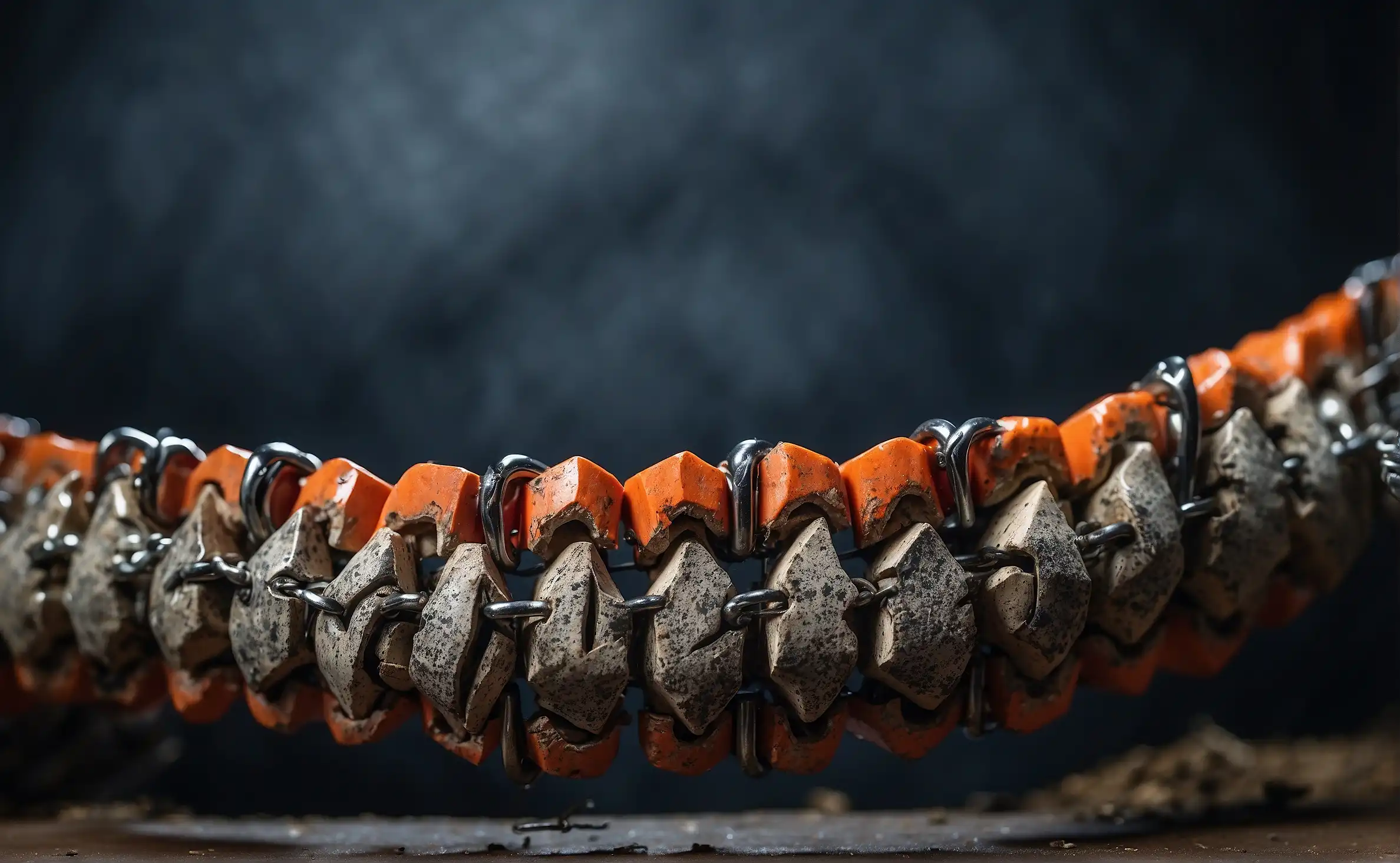The teeth on a chainsaw face forward on the top part of the bar and backward on the bottom, ensuring proper cutting action when the saw operates.
When it comes to operating a chainsaw, understanding the proper orientation of the chain is crucial for both performance and safety. There is a correct direction that the teeth, or cutters, must face, and getting this wrong can lead to a frustrating and potentially hazardous situation. In this blog post, we’ll guide you through the importance of chainsaw teeth direction, how to determine it, and the consequences of incorrect installation.
Understanding Chainsaw Teeth
First and foremost, it’s important to recognize the various components of a chainsaw’s teeth. Typically, a chainsaw chain will feature the following:
- Cutting teeth – These do the actual work of slicing through the wood.
- Drive links – These fit into the guide bar to keep the chain in place.
- Rakers – These control the depth of the cut making sure that the cutting teeth do not bite too deep into the wood.
The Correct Direction of Chainsaw Teeth
The chainsaw teeth, or cutters, should always face towards the direction of rotation, and it is this direction that essentially propels the chainsaw through the wood. To make this clearer, we’ll describe the right direction for the two different types of chainsaw designs:
| Type of Chainsaw | Proper Tooth Direction |
|---|---|
| Handheld Chainsaw | Teeth should face forward on the top side of the guide bar |
| Electric or Bench-mounted Chainsaw | Teeth should face downward on the side facing away from the operator |
A simple way to remember this is that the sharp edge of the tooth should point towards the direction that you want to cut.
Checking Chainsaw Teeth Orientation
To check if your chainsaw teeth are facing the right way, follow these steps:
- Turn off your chainsaw and ensure it’s cool to the touch.
- Identify the cutter’s sharp edge (it should be sharpened to a point).
- Ensure that this sharp edge is facing forwards on the top of the chain if you have a handheld chainsaw, or downwards on the farthest edge from you if you have an electric/bench-mounted model.
- Confirm that each tooth is facing the same direction to maintain consistent cutting performance.
Learn: Why is My Chainsaw Burning the Wood
Consequences of Incorrect Teeth Orientation
Having the teeth on your chainsaw facing the wrong way can lead to a range of problems:
- Reduced cutting effectiveness, as the teeth will be dragging rather than cutting into the wood.
- Potential damage to the chainsaw’s bar and motor due to increased resistance.
- Increase in the likelihood of kickbacks, which are sudden upwards and backwards motions that can lead to serious injury.
- Excessive wear on the chain, requiring more frequent replacements or servicing.
Maintenance of Chainsaw Teeth
Regularly maintaining your chainsaw teeth is important not only for effective cutting but also for ensuring safety. Here are some tips for chainsaw tooth maintenance:
- Check the orientation every time you install the chain or after significant usage.
- Sharpen the teeth regularly to keep them in optimal cutting condition.
- Replace the chain when necessary if the teeth become too worn to effectively sharpen.
- Consult your chainsaw’s user manual for specific maintenance recommendations.
In conclusion, always remember that for a chainsaw to function effectively and safely, the teeth must be facing the right direction. Proper installation ensures peak performance and reduces the risk of injury. Keep this in mind before operating your chainsaw, and take the time to perform regular maintenance checks on the chain’s orientation and sharpness. Nurture your passion for chainsaws with more exciting reads in our Knowledge category.
